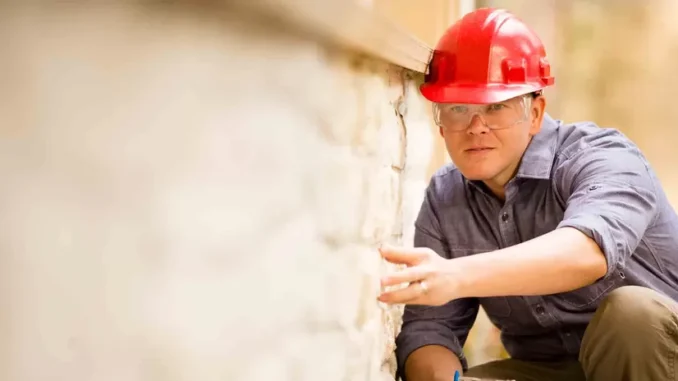
Hiring a home inspector to check out a house before you buy it takes time, but it can save you big money in the end. So what does a home inspector look for in your home?
A home inspector can check for major flaws that might need to be fixed. After all, even if a house looks like it’s in great condition, appearances can be deceiving.
What does one look for in an inspection?
Answer: a whole lot.
“We’ve got 1,600 different items on our list that home inspectors are supposed to look at,” says Claude McGavic, executive director of the National Association of Home Inspectors, which trains and certifies home inspectors throughout the country.
And a home inspection can help a buyer big-time: Provided you have a home inspection contingency in your offer, you can renegotiate with the seller to fix certain problems or to lower the price. If the problems are more than you want to handle (think faulty foundation or roof on the verge of caving in), you can walk away from the deal with your deposit in hand. Either way, it’s a win-win for potential buyers.

A typical home inspector checklist
A home inspection consists of a checklist of potential problems connected to your real estate. While we won’t list all 1,600, here’s a version of a typical inspection:
- Grounds: Home inspectors start the inspection by looking for current or future water issues such as standing puddles and faulty grading or downspouts. They inspect landscaping to see if trees and shrubs are in good condition (an arborist will give you a more detailed assessment), and evaluate pathways, retaining walls, sheds, and railings.
- Structure: Is the house foundation solid? Are the sides straight? Are the window and door frames square? This part of the inspection is particularly important to a buyer who’s considering an older house.
- Roof: A home inspection looks for defects related to the roof, including attic shingles, flashing, and fascia, all of which can cause ceiling drips and leaks in crawl spaces; loose gutters; and defects in chimneys and skylights.
- Exterior: A home inspection checks for siding and attic cracks, rot, or decay; cracking or flaking masonry near the basement; cracks in stucco; dents or bowing in vinyl; blistering or flaking paint; and adequate clearing between siding and earth, which should be a minimum of 6 inches to avoid damage from moisture (although dirt can be in contact with the cement foundation).
- Windows, doors, trim: If you want to keep heat in, cold out, and energy bills low, windows and doors must be in good working condition. The inspector will see if frames are secure and without rot, caulking is solid and secure, and glass is undamaged.
- Interior rooms: Inspectors are concerned about leaning walls that indicate faulty framing; stained ceilings that could point to water problems; adequate insulation behind the walls; and insufficient heating vents that could make a room cold and drafty.
- Kitchen: Inspectors make sure range hood fans vent to the outside; ground-fault circuit interrupter protection exists for electrical outlets within 6 feet of a sink; no leaks occur under the sink; and cabinet doors and drawers operate properly.
- Bathrooms: The goal here is to inspect toilets to see that they’re flushing. The inspection also makes sure drains are draining, showers are spraying, and tubs are securely fastened.
- Plumbing: Inspectors are evaluating pipes, drains, water heaters, and water pressure and temperature. Beyond plumbing issues, they may also look for water damage.
- Electrical systems: Inspectors will check if the visible wiring and electrical panels are in good shape, light switches and the HVAC systems work correctly, and there are enough outlets in each room.
How you can help the during a home inspection
Bring any and all red flags about your real estate property to your inspector before he begins, so he’ll keep a sharp lookout for possible problems. If the seller has disclosed damage, give your inspector a heads-up about that, too.
Another smart move is to accompany the home inspector during his rounds. It’s in your best interest to understand this new home, its systems and potential problems. For instance, an inspector can introduce you to electrical panels, air-conditioning and ventilation switches, and shut-off water valves in the plumbing (which the seller may not know how to operate or forget to show you). If the inspector spots a problem, he can show you exactly how a system is malfunctioning, what it means, and maybe a way to fix it. And this info will serve you well not only before you buy, but afterward as well.
Source: Realtor.com
